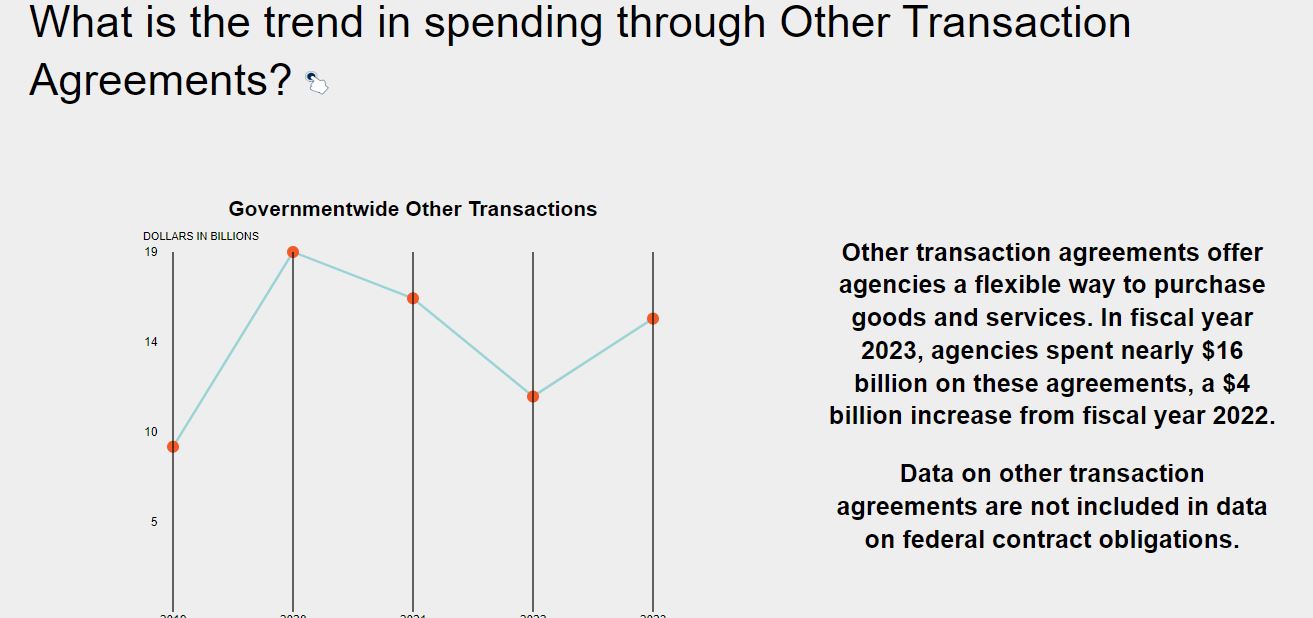Court of Federal Claims asserts more jurisdiction over OTAs
Legal experts say a recent case before the Court of Federal Claims further cements the path for unsuccessful vendors to seek judicial relief for OTAs.
Other transaction agreements are not as protest proof as once thought.
A recent decision by the Court of Federal Claims gives contractors a more specific path to file complaints over these non-typical federal buying efforts.
While federal procurement lawyers say the court’s decision isn’t earth shattering or a significant change in legal precedence, the judge’s ruling cements the path for contractors to file protests of OTAs.
“The IRTC decision is a natural extension of where the court was heading and it’s a straight forward application of the Tucker Act,” said Alex Sarria, a partner with Miller and Chevalier, in an interview with Federal News Network. “There were some decisions that predated IRTC, and they all signaled an increased willingness of the court to use the Tucker Act in cases where it was both a prototype or a production OT because the government is requiring goods or services. This judge’s opinion tells us the sky is really blue and the court is likely to exercise jurisdiction over those efforts.”
The Tucker Act gives the Court of Federal Claims jurisdiction over federal procurement disputes. While OTAs generally are not considered federal procurements, the judge in the IRTC decision leans into the idea that if the government is buying goods or services, then it fits under the COFC’s jurisdiction under the Tucker Act.
The protest focused on a follow-on production OTA the Army Materiel Command awarded for the Rough Terrain Container Handler Modernization program. Both IRTC and Taylor Defense Products received prototype OTAs and completed the efforts successfully. AMC awarded only Taylor Defense Products a follow-on production contract and IRTC filed an agency level protest first and then moved its case to COFC.
Court refused to hear prominent OTA case
The judge ruled against IRTC in the end due to a different issue in the case — IRTC let its SAM.gov registration lapse during the procurement and that oversight violated a contract clause thus disqualifying the company from competition.
But the determination of the court’s jurisdiction over OTAs is the real outcome of the case. Sarria said IRTC “lost the battle, but won the war.”
Previously, the path to protest OTAs was less clear. The most prominent case involved Space X in 2021 protesting a Defense Department award. The COFC refused to hear the case and transferred to the district court.
Locke Bell, a partner with Morrison and Forester, said this is why judge’s basis for the IRTC decision adds clarity to the process.
He said previously contractors could file with the Court of Federal Claims or a district court depending on whether or not the OTA was for a prototype with a potential for a production follow-on.
“The alternative to the COFC having or not having jurisdiction was a federal court of general jurisdiction where the judge handles a lot of matters, but isn’t specialized in contracting. The COFC judges only hear contracting bid protests so as practitioners, it’s better for us and vendors,” Bell said. “Anytime that you have support for additional protest review, whether the court reaffirms or opens the door to a new jurisdiction, it will result in more transparency, accountability and oversight, even if it’s just affirming where we understood jurisdiction to stand already.”
Experts have worried that OTAs lacked true transparency and oversight because they are not based on the Federal Acquisition Regulations and do not have to necessarily follow the same laws and policies like the Competition in Contracting Act (CICA).
The use of OTAs spiked in 2020 during the pandemic and after coming down in 2021 have been back on the rise in 2022 and 2023. The Government Accountability Office reported that agencies spent more than $16 billion through OTAs in 2023, which was a $4 billion increase over 2022.

GAO says the Army spent more than $6.9 billion on OTAs last year with the Air Force and the Navy both spending more than $2.6 billion.
Between 2016 and 2022, DoD took 15,000 OTA actions worth about $70 billion. In fiscal 2022, the department took about 4,400 actions worth $10.7 billion.
As OTAs continue to increase, Bell said the COFC decision is important because it further dispels the myth that these agreements are protest-proof. He said that was never the case, but without the typical path of going to GAO or COFC like vendors can with FAR-based procurements, it wasn’t clear what the best approach was to seek judicial relief.
GAO still has not asserted jurisdiction over OTA protests beyond the basic view of whether agencies are using their authorities correctly.
Impact on GAO unclear
Sarria said the IRTC decision doesn’t have a direct impact on GAO’s decision either.
But, he said, the court’s decision to exercise jurisdiction may provide “air cover” for GAO to look at their mandate and see parallels, which could ultimately lead GAO to take on OTA protests.
“Where GAO has moved in last year or so is in analogous procurements where effectively the government is conducting a phased competition among a pool of companies and then downselecting to a smaller pool or one awardee. GAO has signaled, and this goes back quite a long time, that it will exercise jurisdiction in downselect cases,” Sarria said. “How that relates to OTA is that this is the fundamental set up in how OTAs work. The government says there is a winner of this mini competition that will move to sole source production contract. There are a lot of parallels there.”
Bell added the other big question is how the COFC will use previous case law to guide its decisions.
“Will they apply same case law and standards that we’ve built up over the years? OTAs do not use these underlying laws like CICA or the FAR,” he said. “You might expect the COFC to more likely apply the precedents that they are familiar with. I think it will see increased transparency and accountability to consolidate these protests at the COFC versus spreading them out across multiple courts.”
Copyright © 2024 Federal News Network. All rights reserved. This website is not intended for users located within the European Economic Area.
Jason Miller is executive editor of Federal News Network and directs news coverage on the people, policy and programs of the federal government.
Follow @jmillerWFED







